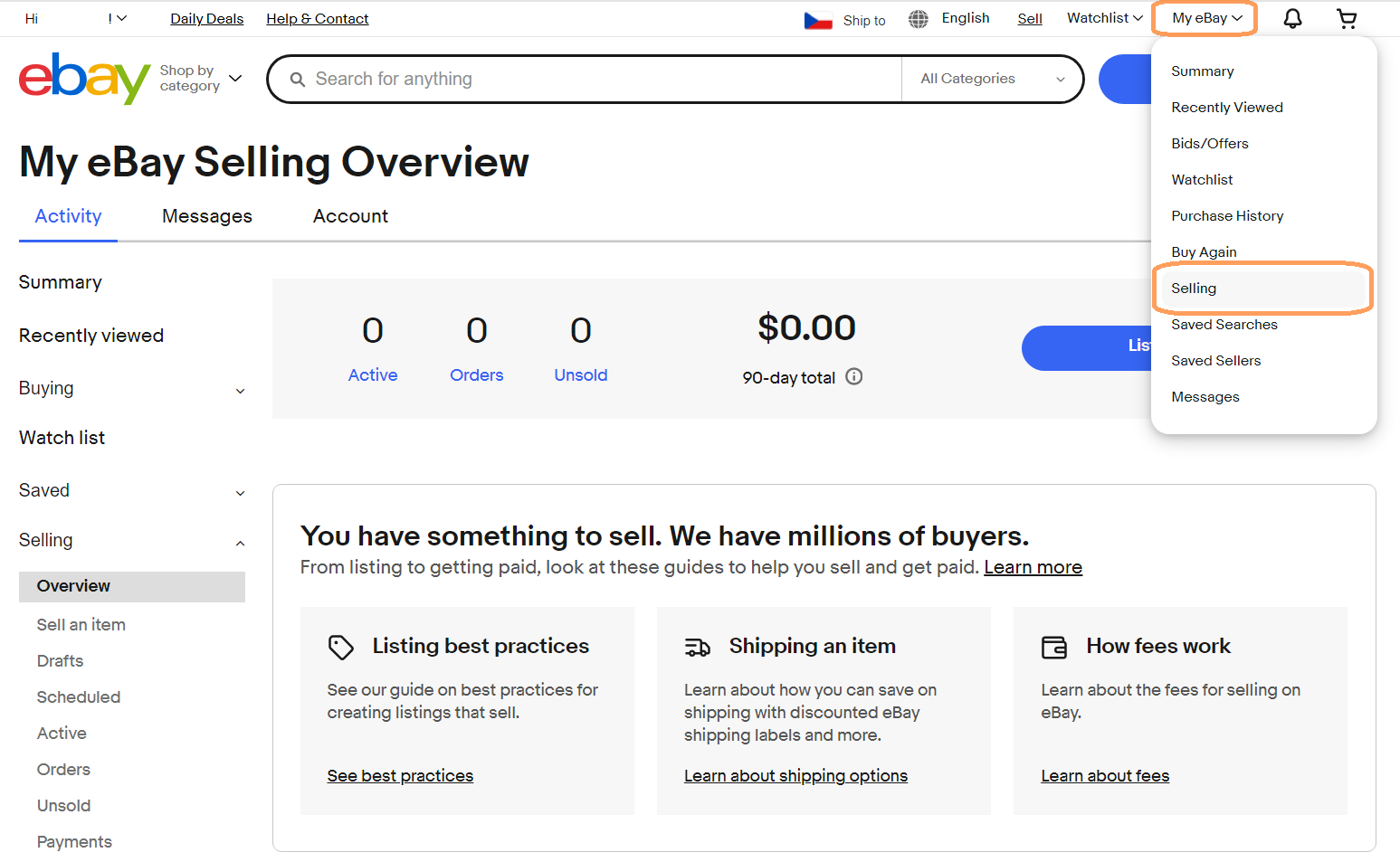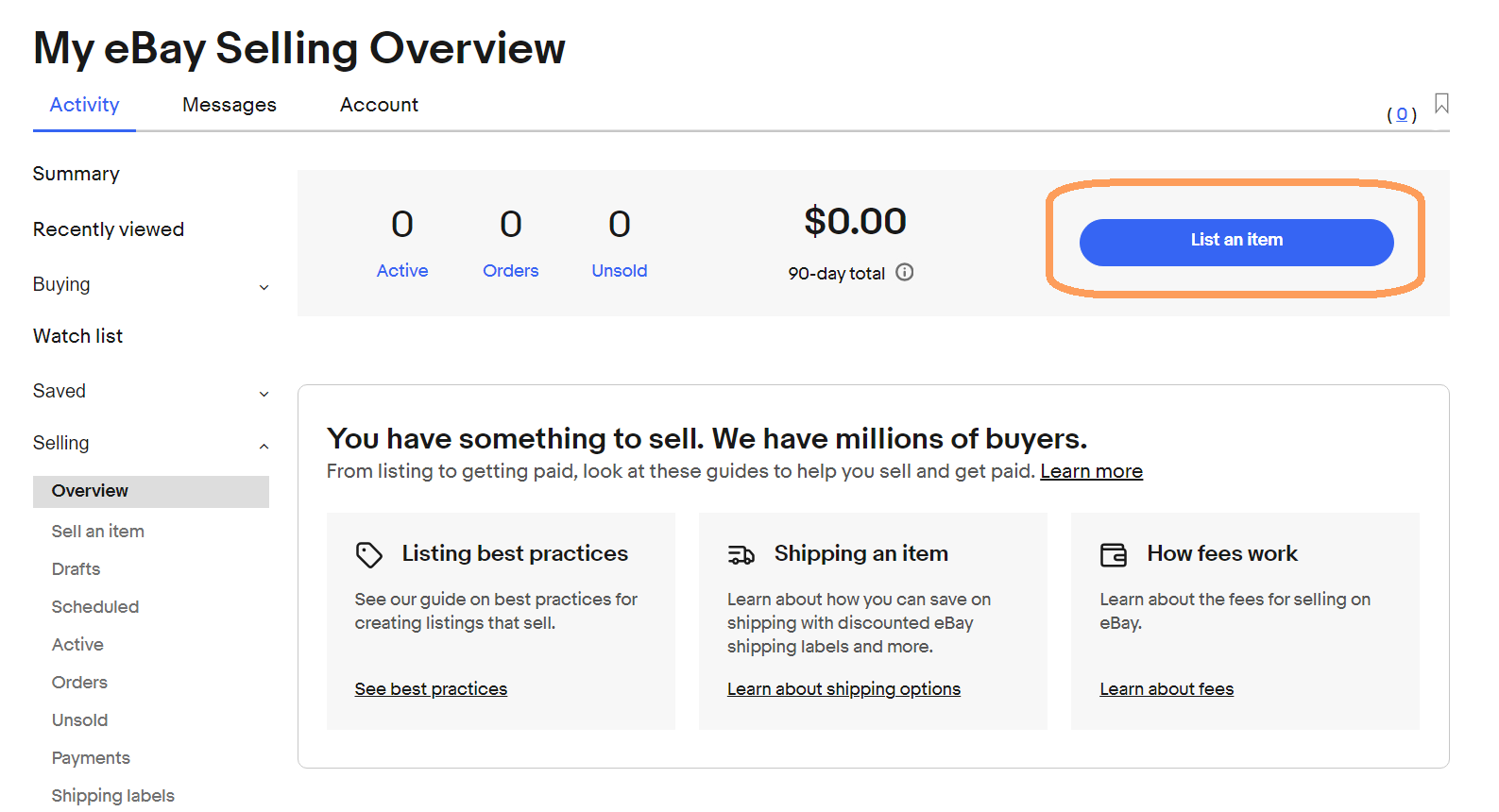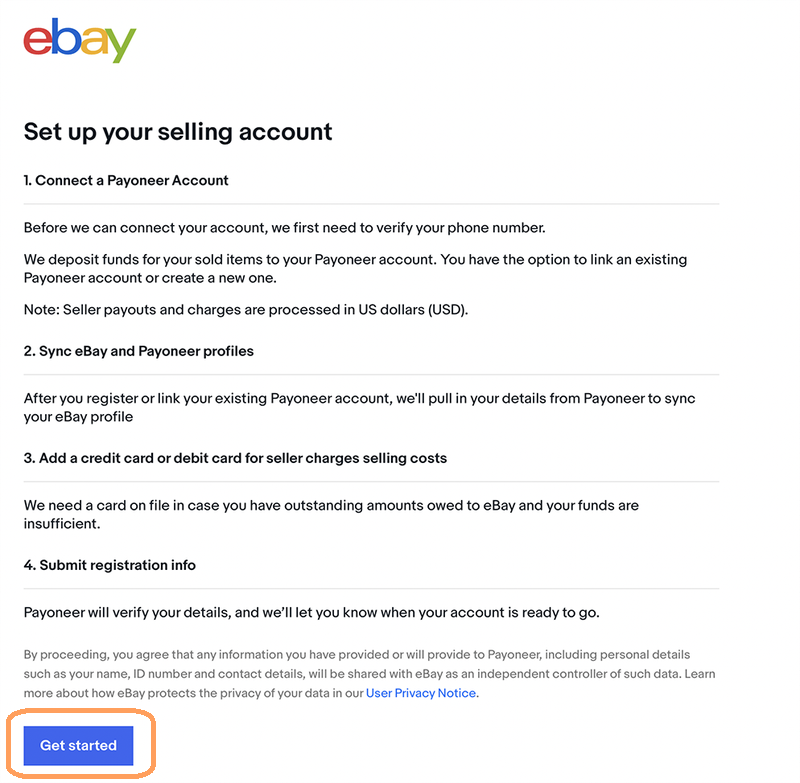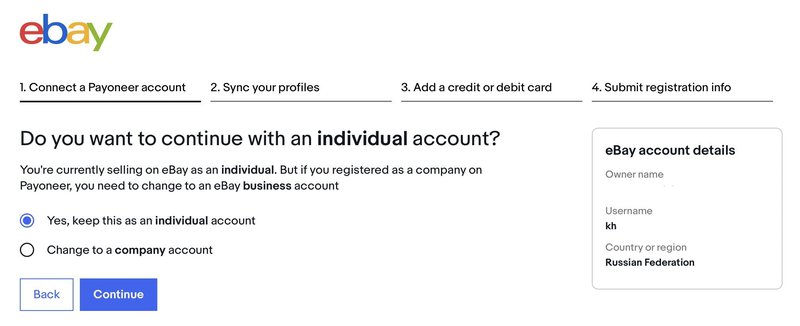Article content:
- How to Start Selling on eBay: Registration Instructions.
- Terms, Fees, and Withdrawals.
- Typical Seller Mistakes — Explained by DiFFreight Experts.
- How to Sell on eBay Profitably.
- How to Sell on eBay Effectively with DiFFreight.
eBay is a global platform for online trading of both new and used goods. It differs from other marketplaces by focusing on an auction-based model, though it also supports fixed prices. The platform is the second most popular after Amazon, so consider it if you're thinking about entering the international market.
How to Start Selling on eBay: Registration Instructions
Creating a seller account is very simple thanks to the user-friendly interface:
- First, register as a buyer — log in to the marketplace using a Google account, Facebook, or email. Click "Continue." You’ll be redirected to the My eBay page.
- In the upper right corner, find the dropdown My eBay menu and select Selling.

- List your first item by clicking List an item. Fill in the description, upload photos. This listing will be saved as a draft. Then click Submit.

- You’ll be directed to the seller account registration page. Click Get started.

- Link your account to your phone number. Then, you’ll be able to add payment details — a Payoneer account. Switch your account type.

- Complete the card linking process.
A Business account is suitable for entrepreneurs and companies. The platform may request information about the company name, address, owners’ last names, directors, officers, etc. Keep an eye on email notifications.
Since PayPal’s functionality is limited in Ukraine, it’s recommended to use Payoneer.
Terms, Fees, and Withdrawals
Before starting to work with eBay, carefully review the auction platform’s fees:
- A fixed fee per listing, which differs based on the category and price. For items under $10 — a $0.30 fee; for items over $10 — a $0.40 fee.
- Up to 250 listings per month are free; beyond that — $0.35 per additional listing.
- A percentage of the total order amount — for most categories, it’s 13.25%.
If you sell jewelry, you’ll pay 15% for orders up to $5000. The full list of fees can be found in the eBay Seller Center.
Another important question — how do you get the money from eBay sales?
Funds are deposited into a Payoneer account, from which you can withdraw them to Ukrainian bank cards with a 2% fee. For business Payoneer accounts, withdrawals to private entrepreneur (FOP) and company accounts are available.
If you’re a seller with low turnover, you can use an individual account. Accordingly, funds can only be transferred to a personal card. In this case, the standard tax is 19.5%.
Typical Seller Mistakes — Explained by DiFFreight Experts
Here are the common mistakes new sellers make:
- Incorrect pricing. Setting prices too high reduces competitiveness, while pricing too low cuts into your profit.
- Incomplete calculation of eBay and payment system fees. Sellers often forget or underestimate various charges, leading to unexpected losses.
- Poor customer service. Slow or uninformative replies, ignoring messages, or mishandling disputes lower your seller rating.
- Unoptimized listings and poor-quality photos. Buyers rely heavily on descriptions and images. Inaccurate or unclear information discourages purchases and leads to returns or negative reviews.
- Shipping issues. Slow dispatch, incorrect price estimates, poor packaging, or lack of tracking negatively affect buyer experience and your rating.
Selling from Ukraine on eBay is profitable if you have a local reseller or warehouse in the USA or Europe since eBay doesn’t offer fulfillment services similar to Amazon FBA. So, delivery responsibilities fall on the seller.
Most sellers use third-party logistics providers (3PL), who store goods in their warehouses using a fulfillment model. Here’s why this is beneficial:
- Reduces shipping costs for buyers;
- No need to worry about packaging and dispatch — it’s included in the fulfillment;
- Simplifies inventory management;
- Most importantly — fast delivery improves your reliability as a seller.
But how do you get your product to a European or American warehouse?
DiFFreight offers logistics services:
DiFFreight has years of experience, high-quality service, and fast delivery. We're ready to become your logistics partner for export!
How to Sell on eBay Profitably
Profit depends not only on having a product but also on how you run your business. Here are the key aspects to maximize earnings:
- Smart niche and product selection. Research the market to find products with high demand but reasonable competition. Consider procurement cost, resale margin, shipping costs, and platform fees.
- Your listing is your storefront. Use clear, informative titles with relevant keywords. Write detailed and accurate descriptions that highlight product benefits. High-quality photos from multiple angles are critical. Include all specifications, sizes, condition (for used goods), and contents.
- Smart pricing strategy. Carefully review the applicable fees for your product category. Don’t forget to account for return-related expenses.
- Shipping optimization. Offer multiple options, including affordable and fast delivery. Consider “free” shipping (built into the price), which is attractive to buyers.
- Product promotion. Use advertising tools to increase visibility. Participate in platform campaigns or run your own discounts and sales.
- Inventory management: Plan procurement and deliveries to your fulfillment warehouse.
- Analytics. Track sales, expenses, views, conversions, and more. Analyze what sells better, where your traffic comes from, and which strategies work best.
Selling on eBay is multifaceted — from niche selection to promotion strategies and building your seller reputation.
How to Sell on eBay Effectively with DiFFreight
DiFFreight is more than just logistics! We support both beginners and experienced business owners. We offer consultations on documentation for import/export, payment system setup, and fulfillment logistics.
In our Telegram channel, we share lists of highly profitable products that can be sold on eBay. Leave a request — and we’ll call you back!




